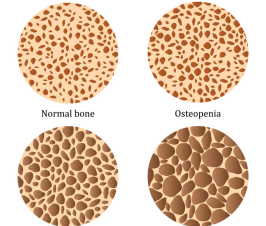Today’s woman is fortunate since there are several forms of hormone therapy available for those suffering from menopausal symptoms. Symptoms can be severe enough to disrupt normal daily living and include hot flashes, anxiety, insomnia, mood swings, weight gain, loss of libido, brain fog, heart palpitations, headaches, thinning hair, dry skin, and eyes, increased facial hair, digestive problems, pain during intercourse and urinary dysfunction.
Many women are afraid to use hormones and sorting through the facts relating to hormone therapy is confusing. The findings of the Women’s Health Initiative (WHI) put a screeching halt on the use of conjugated equine estrogens (CEEs) and progestins over a decade ago because the study indicated these hormones cause cancer, deep vein thrombosis, pulmonary embolism, stroke and myocardial infarction. Countless women discontinued their hormone therapy and suffered from their menopausal symptoms only to progress to the long-term consequences of the lack of estrogen, which include increased risk of osteoporosis, dementia and Alzheimer’s.
It has been well established that estrogens isolated from the urine of pregnant mares, (CEEs, such as Premarin) cause undesirable health effects in women,1,2,3 and the pharmaceutical industry now offers bio-identical estrogen products, but what about progesterone? It turns out that the formof progesterone utilized for hormone therapy is of utmost importance. Progestins are a synthetic form of progesterone and are most commonly found in birth control pills, emergency contraception, Provera and Prempro.
In studies where progestins and bioidentical micronized progesterone have been compared, the progestins have repeatedly been found to increase breast cell proliferation while bioidentical micronized progesterone has not.3,4,5 Bioidentical hormones are molecularly identical to the hormones of the human body. It is important to note, again, that the subjects of the WHI study were using medroxyprogesterone acetate (a progestin), which was found to increase the risk of breast cancer.
Current studies are not showing evidence of increased risk of breast cancer risk for the first 5 years of bio-identical hormone use. There is a slightly increased risk of breast cancer for longer use (statistics vary with types of hormones utilized).6,7 One also has to understand the limits of research because it is extremely difficult to obtain definitive numbers due to the fact that it takes years for breast cancer tumors to develop and many factors, including age, genetic predisposition, environmental toxin exposure, adipose tissue, and lack of exercise affect tumor occurrence and growth rates.
Since our personal environment, biochemistry and physiology influence hormones, each woman has a unique need for and supply of hormones – there is no one size fits all. Using bio-identical hormones from a compounding pharmacy allows one to individualize treatment according to dosage, forms, and constituents or additives used to deliver the hormones and they can be less expensive than pharmaceuticals for those with high deductibles or no insurance. Bioidentical hormones can be delivered via capsules, creams, sublingual troches and injectable pellets to provide symptomatic relief of peri-menopause and menopause.
It’s important that you choose a doctor who will take the time to explain hormone replacement (both pharmaceutical and bioidentical hormones from compounding pharmacies), pharmaceutical drug, herbal and nutraceutical therapies, along with their benefits and risks, so you can decide what is best for your unique situation. Regardless of the therapy you choose for menopausal symptom relief, it is imperative that your health care provider takes the time to explain diet and lifestyle modifications in order to minimize the risks from hormone therapy and/or improve the effectiveness of alternative therapies.
 Cheryl Hamilton, NMD, began her career in healthcare 30 years ago. She earned a B.S. degree in nutrition, worked in the health and fitness industry, and raised four children before attending the Southwest College of Naturopathic Medicine to become a naturopathic medical doctor. She practices at the Women’s Health and Healing Center in Prescott Valley, Arizona. Dr. Hamilton is passionate about assisting women and their loved ones to improve health and wellbeing. She has an extensive background in gastrointestinal health, weight management, bio-identical hormone therapy, treatment of premenstrual syndrome (PMS)/ premenstrual dysphoric disorder (PMDD), polycystic ovary syndrome (PCOS), cervical dysplasia and sexual dysfunction. Dr. Hamilton is the only practitioner in the Quad Cities area of Northern Arizona to offers platelet rich plasma (PRP) injection therapy (known as the O-shot®), in the treatment of female sexual dysfunction and urinary stress incontinence. Dr. Hamilton also utilizes PRP for skin rejuvenation therapies (wrinkle reduction, scartherapyand hair regrowth) because she knows that how a woman feels about her outward appearance strongly influences her mental and physical health. When she’s not seeing patients, Dr. Hamilton loves gardening, healthy cooking, and hiking.
Cheryl Hamilton, NMD, began her career in healthcare 30 years ago. She earned a B.S. degree in nutrition, worked in the health and fitness industry, and raised four children before attending the Southwest College of Naturopathic Medicine to become a naturopathic medical doctor. She practices at the Women’s Health and Healing Center in Prescott Valley, Arizona. Dr. Hamilton is passionate about assisting women and their loved ones to improve health and wellbeing. She has an extensive background in gastrointestinal health, weight management, bio-identical hormone therapy, treatment of premenstrual syndrome (PMS)/ premenstrual dysphoric disorder (PMDD), polycystic ovary syndrome (PCOS), cervical dysplasia and sexual dysfunction. Dr. Hamilton is the only practitioner in the Quad Cities area of Northern Arizona to offers platelet rich plasma (PRP) injection therapy (known as the O-shot®), in the treatment of female sexual dysfunction and urinary stress incontinence. Dr. Hamilton also utilizes PRP for skin rejuvenation therapies (wrinkle reduction, scartherapyand hair regrowth) because she knows that how a woman feels about her outward appearance strongly influences her mental and physical health. When she’s not seeing patients, Dr. Hamilton loves gardening, healthy cooking, and hiking.
If you are interested in obtaining more information about Dr. Hamilton or the Women’s Health and Healing Center please call 928-515-2363, or go to www.womenshealthandhealingcenter.com. The Women’s Health and Healing Center is located at 8363 E. Florentine Road, Suite C, in Prescott Valley.
References:
- Murkes D, Lalitkumar PG, Leifland et al. Percutaneous estradiol/oral micronized progesterone has less-adverse effects and different gene regulations than oral conjugated equine estrogens/medroxyprogesterone acetate in the breasts of healthy women in vivo. Gynecol Endocrinol. 2012 Oct;28 Suppl 2:12-5.
- Murkes D, Conner P, Leifland et al. Effects of percutaneous estradiol-oral progesterone versus oral conjugated equine estrogens-medroxyprogesterone acetate on breast cell proliferation and bcl-2 protein in healthy women. Fertil Steril. 2011 Mar 1;95(3): 1188-91.
- Chang KJ et al. Influences of percutaneous administration of estradiol and progesterone on human breast epithelial cell cycle in vivo. Fertil Steril. 1995; 63(4):785-91.
- Fournier A, Berrino F, Riboli E et al. Breast cancer risk in relation to different types of hormone replacement therapy in the E3N-EPIC cohort. Int J Cancer. 2005; 114(3): 448-54.
- Campagnoli, C., Abbà, C., Ambroggio, S., & Peris, C. (2005). Pregnancy, progesterone and progestins in relation to breast cancer risk. J Steroid Biochem, 97(5), 441-450.
- Breast cancer and hormone replacement therapy: collaborative reanalysis of data from 51 epidemiological studies of 52,705 women with breast cancer and 108,411 women without breast cancer. Collaborative Group on Hormonal Factors in Breast Cancer. Lancet. 1997 Oct 11;350(9084):1047-59.
- Fournier, Agnès, et al. Unequal risks for breast cancer associated with different hormone replacement therapies: results from the E3N cohort study. Breast Cancer Res Treat. 2008 Jan; 107(1): 103–111.

















